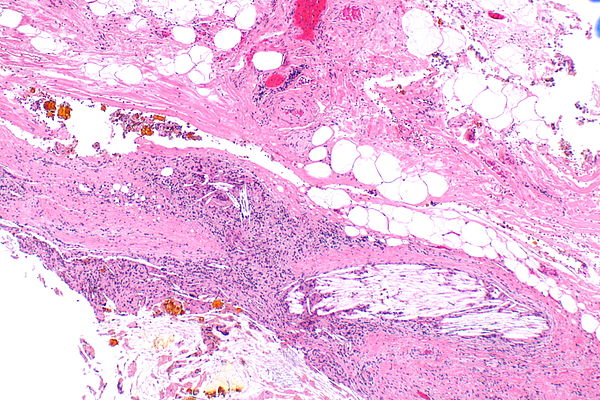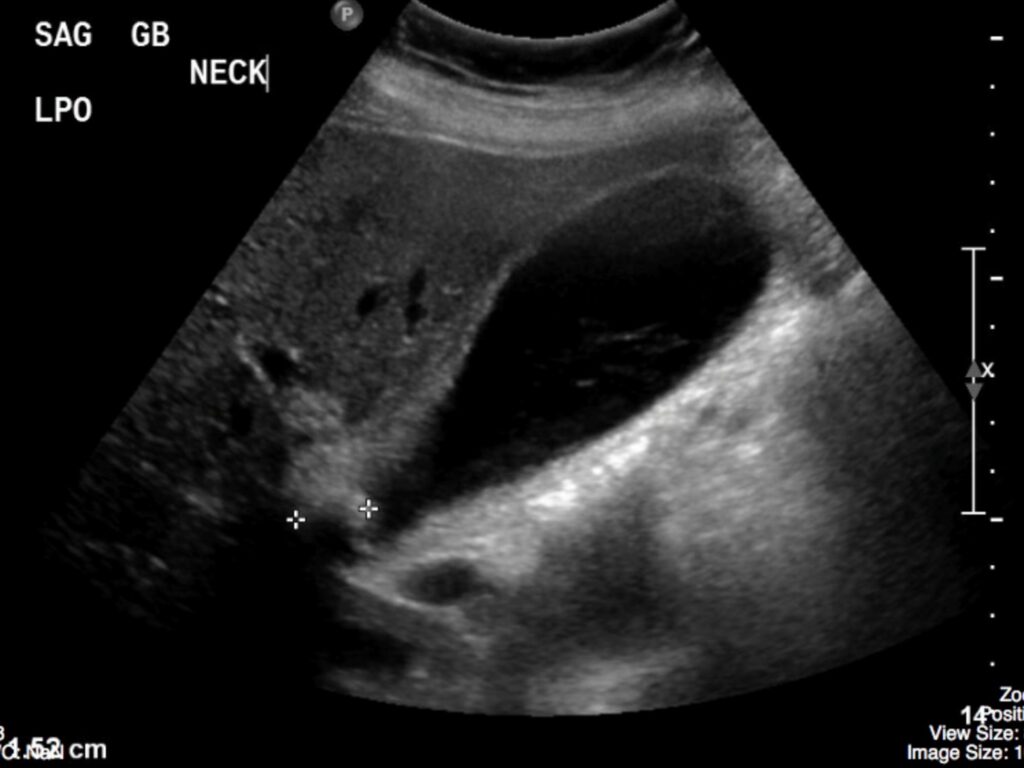Inflammation of the gallbladder, medically known as cholecystitis, is a condition that affects millions of people worldwide. It occurs when the gallbladder becomes inflamed, often due to the presence of gallstones or other underlying health issues. Cholecystitis can lead to severe pain and discomfort, and if left untreated, it may result in serious complications. Understanding the causes, recognizing the symptoms, and exploring treatment options are essential steps in managing this condition effectively.

What is the Gallbladder?
The gallbladder is a small, pear-shaped organ located beneath the liver. Its primary function is to store bile, a digestive fluid produced by the liver. Bile helps break down fats in the food we eat, aiding in digestion. When we consume a meal, especially one that contains fats, the gallbladder contracts and releases bile into the small intestine through a series of ducts. This process ensures efficient digestion and absorption of nutrients.
Causes of Inflammation of the Gallbladder
There are several factors that can lead to inflammation of the gallbladder. The most common cause is the presence of gallstones, which are hardened deposits that form within the gallbladder. Below are some of the leading causes of gallbladder inflammation:
Gallstones
Gallstones are solid particles that develop when substances in bile, such as cholesterol or bilirubin, crystallize. These stones can block the ducts that allow bile to flow out of the gallbladder, causing bile to build up and leading to inflammation. Gallstones are the most frequent cause of acute cholecystitis, which is characterized by sudden and severe pain.
Bile Duct Blockage
A blockage in the bile duct can also result in inflammation. This blockage may occur due to tumors, scar tissue, or other obstructions that prevent bile from leaving the gallbladder. When bile cannot exit the gallbladder, pressure builds up, leading to swelling and irritation of the gallbladder walls.
Infections
In rare cases, infections can cause inflammation of the gallbladder. Bacterial infections may spread to the gallbladder from other parts of the body, leading to a condition known as acute acalculous cholecystitis. This type of inflammation does not involve gallstones and is often seen in individuals with weakened immune systems or those who are critically ill.
Tumors
Tumors, whether benign or malignant, can obstruct the normal flow of bile and contribute to gallbladder inflammation. Tumors in the gallbladder or nearby areas, such as the pancreas or liver, may compress bile ducts, preventing bile from being released properly.
Symptoms of Gallbladder Inflammation
The symptoms of inflammation of the gallbladder can vary depending on the severity of the condition. Some individuals may experience mild discomfort, while others may suffer from intense pain. Common symptoms include:
Severe Abdominal Pain
One of the hallmark symptoms of gallbladder inflammation is severe pain in the upper right portion of the abdomen. This pain may radiate to the back or shoulder and is often described as sharp or cramping. It typically worsens after eating, especially following a fatty meal.
Fever and Chills
Fever and chills are common signs of infection or inflammation. If the gallbladder becomes infected, the body may respond with an elevated temperature and shivering. These symptoms should not be ignored, as they may indicate a more serious condition requiring immediate medical attention.
Nausea and Vomiting
Many individuals with gallbladder inflammation experience nausea and vomiting. These symptoms are often accompanied by a loss of appetite and can contribute to dehydration if fluids are not replenished adequately.
Tenderness in the Abdomen
Pressing on the abdomen may reveal tenderness in the area surrounding the gallbladder. This sensitivity is a result of the inflammation and swelling of the gallbladder walls. Individuals may notice discomfort even with light pressure or touch.
Jaundice
In some cases, gallbladder inflammation can lead to jaundice, a condition characterized by yellowing of the skin and eyes. Jaundice occurs when bile ducts are blocked, causing bilirubin, a pigment found in bile, to accumulate in the bloodstream. This symptom is often associated with more advanced cases of gallbladder disease.
Diagnosis of Gallbladder Inflammation
To diagnose inflammation of the gallbladder, healthcare providers rely on a combination of physical examinations, medical history reviews, and diagnostic tests. Accurate diagnosis is crucial for determining the appropriate treatment plan.
Physical Examination
During a physical examination, a doctor will assess the abdomen for signs of tenderness, swelling, or pain. They may also inquire about the patient’s symptoms, including the location and intensity of the pain, as well as any associated symptoms like fever or nausea.
Imaging Tests
Imaging tests play a vital role in diagnosing gallbladder inflammation. An ultrasound is often the first test performed, as it provides detailed images of the gallbladder and can detect the presence of gallstones or other abnormalities. In some cases, additional imaging tests, such as a CT scan or MRI, may be necessary to obtain a clearer picture of the gallbladder and surrounding structures.
Blood Tests
Blood tests can help identify signs of infection or inflammation in the body. Elevated levels of white blood cells, liver enzymes, or bilirubin may indicate gallbladder inflammation or related complications. These tests provide valuable information that aids in confirming the diagnosis.
Treatment Options for Gallbladder Inflammation
Treatment for inflammation of the gallbladder depends on the underlying cause and the severity of the condition. In most cases, the goal of treatment is to relieve symptoms, address the root cause, and prevent complications. Below are some common treatment approaches:
Medications
For mild cases of gallbladder inflammation, medications may be prescribed to manage symptoms and reduce inflammation. Antibiotics are often used to treat infections, while pain relievers can help alleviate discomfort. In some cases, medications may also be prescribed to dissolve gallstones, although this approach is less common and typically takes longer to produce results.
Fasting
In the early stages of treatment, fasting may be recommended to give the gallbladder time to rest and recover. By avoiding food intake temporarily, the gallbladder is not required to contract and release bile, allowing inflammation to subside. Intravenous fluids may be administered during this period to ensure proper hydration.
Surgical Removal of the Gallbladder
In cases where gallstones or chronic inflammation are present, surgical removal of the gallbladder, known as a cholecystectomy, may be necessary. This procedure is typically performed using minimally invasive techniques, such as laparoscopy, which involve making small incisions in the abdomen. Removing the gallbladder is often the most effective way to prevent recurrent episodes of inflammation.
Endoscopic Procedures
For individuals with bile duct blockages, endoscopic procedures may be used to remove obstructions and restore proper bile flow. During an endoscopic retrograde cholangiopancreatography, a thin tube with a camera is inserted through the mouth and into the digestive tract to locate and remove blockages.
Lifestyle Changes
Making certain lifestyle changes can help reduce the risk of developing gallbladder inflammation or prevent its recurrence. A diet low in fat and high in fiber is often recommended, as it promotes healthy digestion and reduces the likelihood of gallstone formation. Maintaining a healthy weight and exercising regularly are also important preventive measures.
Complications of Untreated Gallbladder Inflammation
If left untreated, inflammation of the gallbladder can lead to serious complications. One potential complication is the development of an abscess, which is a pocket of pus that forms within the gallbladder. Another concern is the rupture of the gallbladder, which can cause bile to leak into the abdominal cavity and lead to a life-threatening infection known as peritonitis. Seeking prompt medical attention is essential to avoid these risks.
Preventing Gallbladder Inflammation
While not all cases of gallbladder inflammation can be prevented, certain steps can reduce the risk of developing this condition. Eating a balanced diet, staying physically active, and maintaining a healthy weight are key strategies for prevention. Additionally, individuals with a family history of gallstones or gallbladder disease should be vigilant about monitoring their health and seeking medical advice if symptoms arise.





